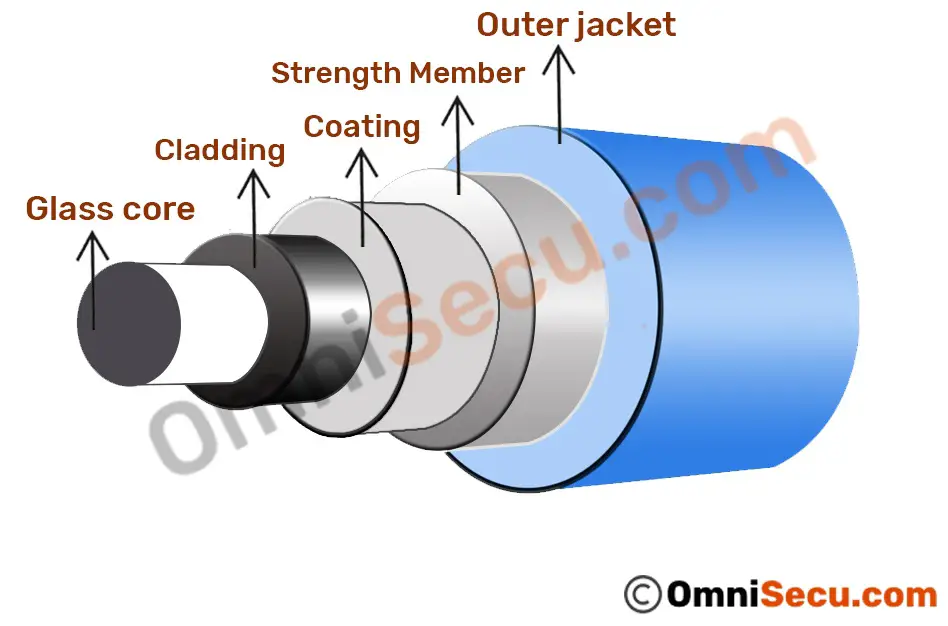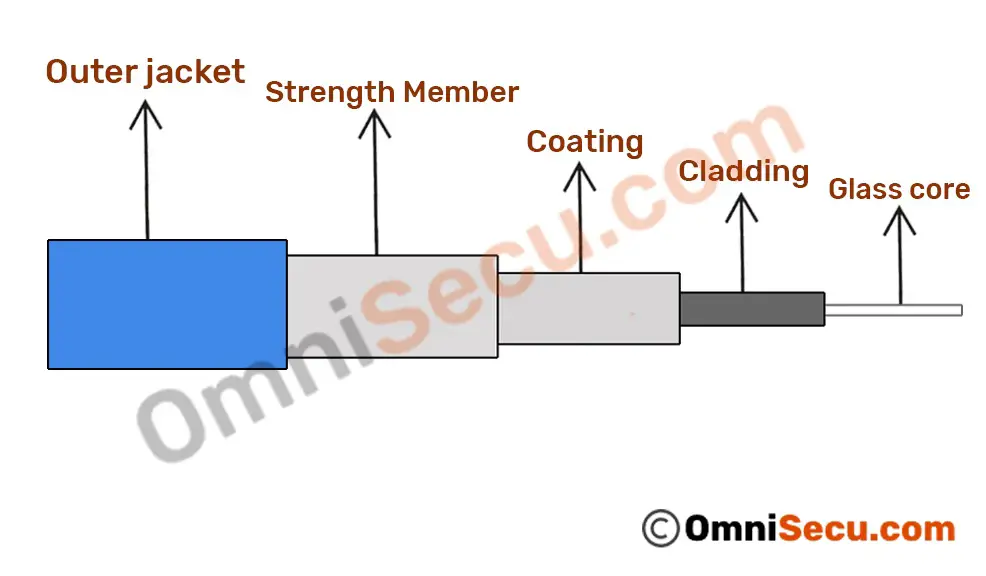Structure of fiber optic cable (FOC)
Fiber optic cables use light to transmit data, instead of electricity as in twisted pair cables. Different types of fiber optic cables have their own specific structure. Slight variation may happen in the structure of different types of fiber optic cables, depending on the purpose optical fiber cables are designed for.
Generally, optical fiber cables have following components in its structure.
• Outer jacket
• Strength member
• Coating
• Cladding
• Glass core


Basic elements of optical fiber cables are listed below
• Glass core
• Cladding
• Coating
A brief description about Glass core, Cladding and Coating of fiber optic cable are given below.
Glass core
The Glass core is the innermost part of the fiber optic cable. Glass core is the fiber strand which is used to transmit light. Light signals pass through Glass core. Even though mentioned as Glass core, core is made from either glass or special grade plastic. The larger the diameter of the Glass core, more light can be transmitted over it.
Cladding
Cladding is the just the outer line of the Glass core. Cladding reduces light scattering. Cladding is used to keep the reflection of light signals within the core, so that so that light signals stay inside Glass core. Thus, cladding reduces loss of light from the core to outside. Also, the cladding protects the Glass core from outside contaminants.
Coating
Cladding is enclosed in another outside layer called as coating. Coatings are used to provide extra protection to Glass core and cladding.